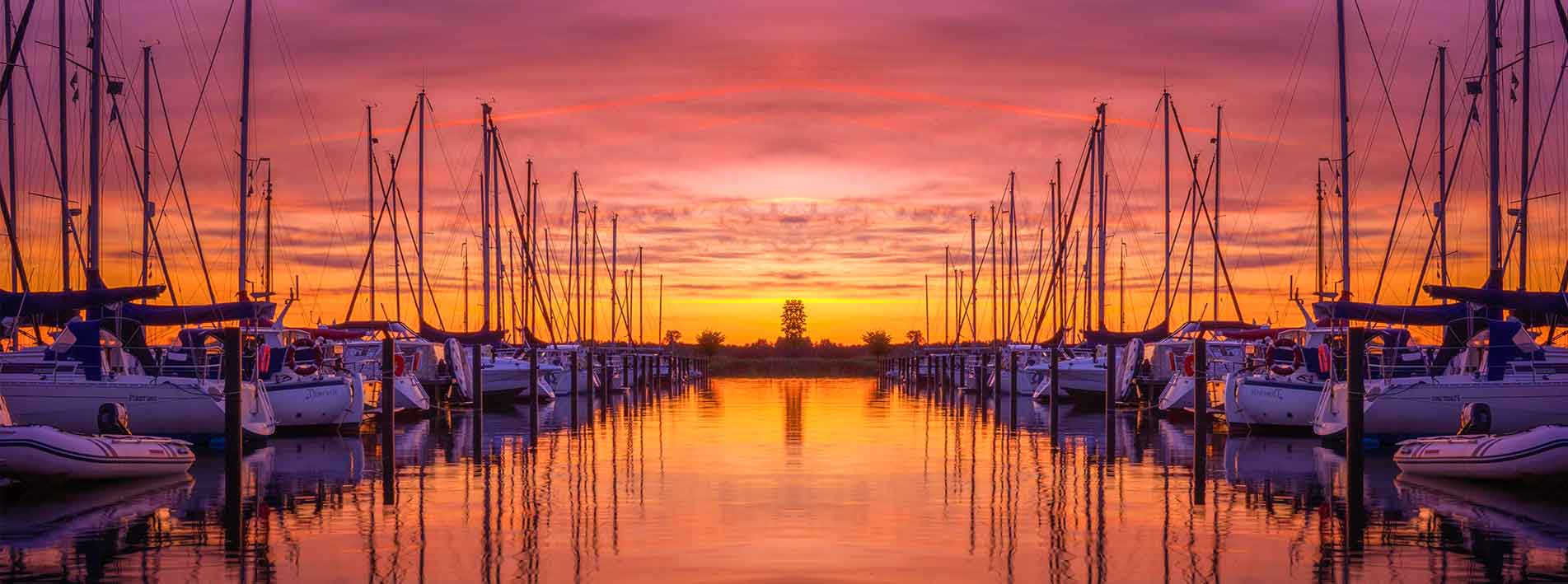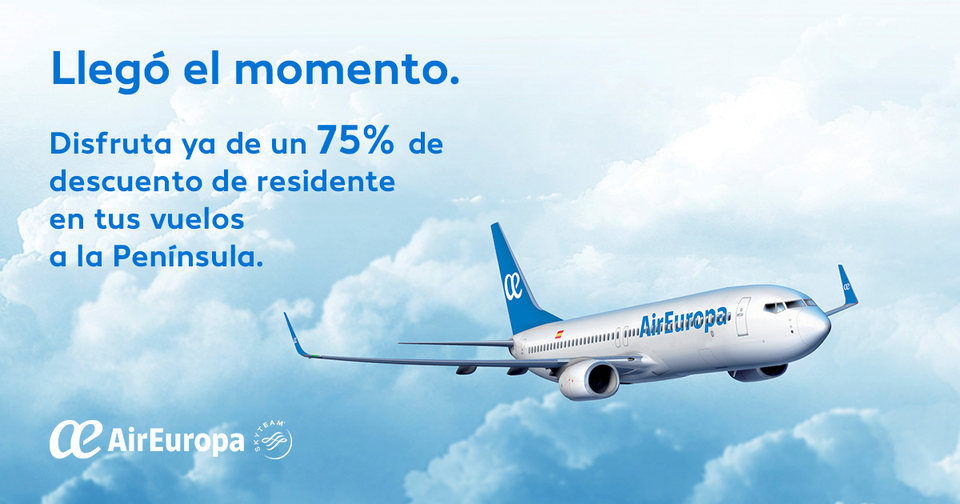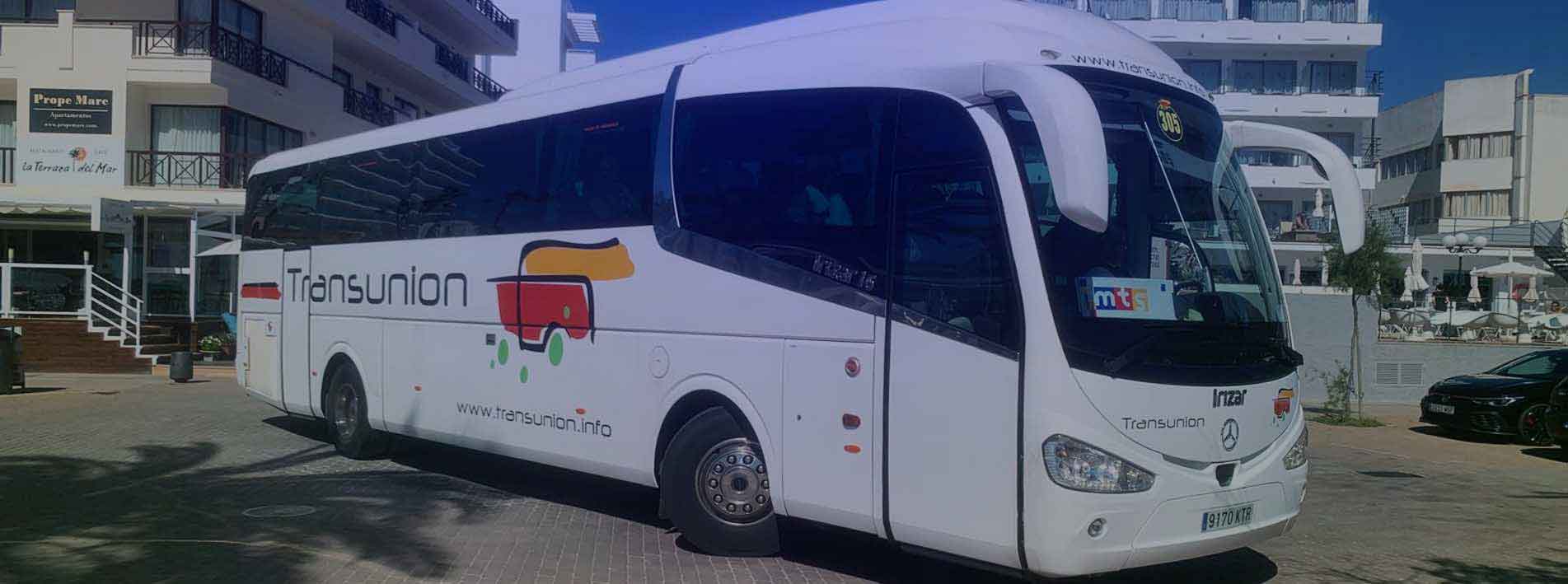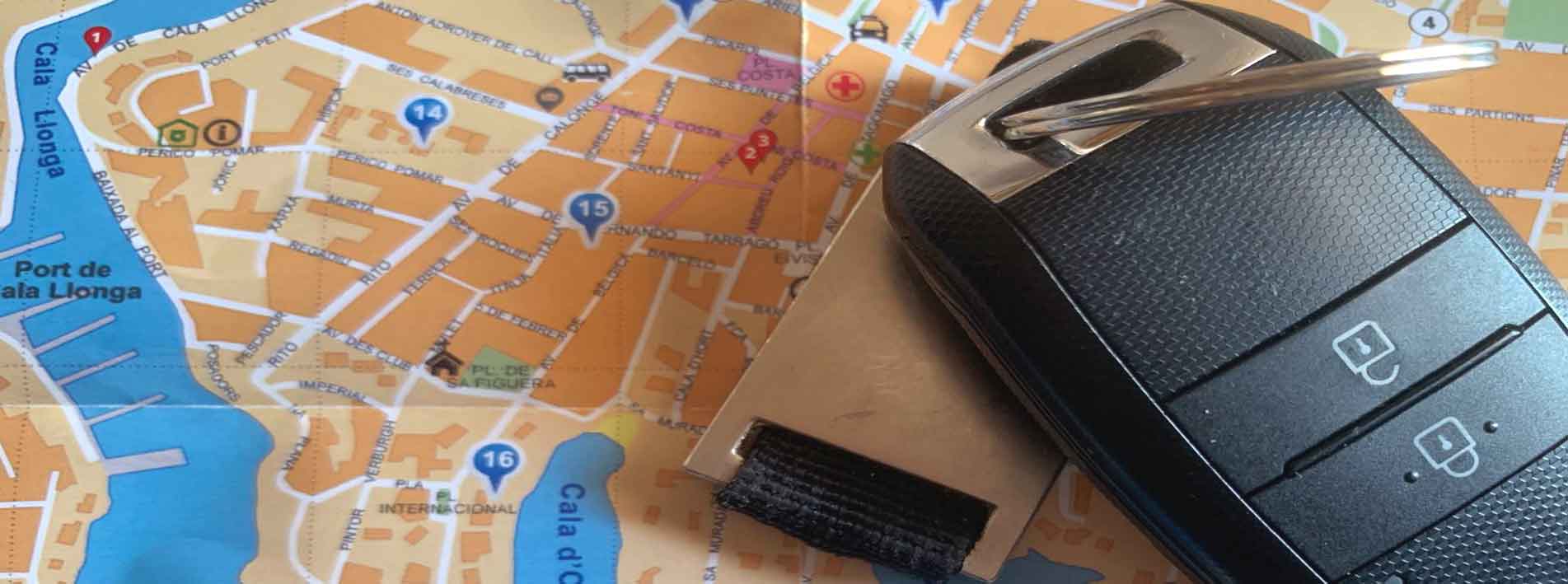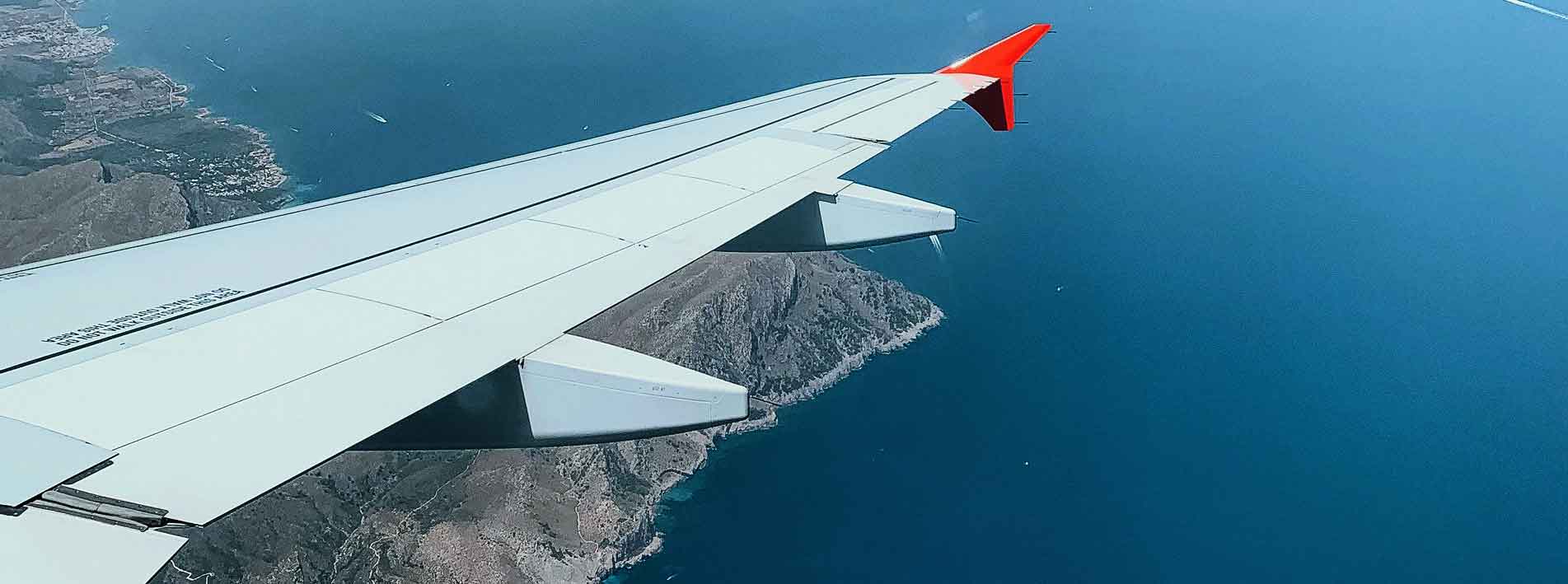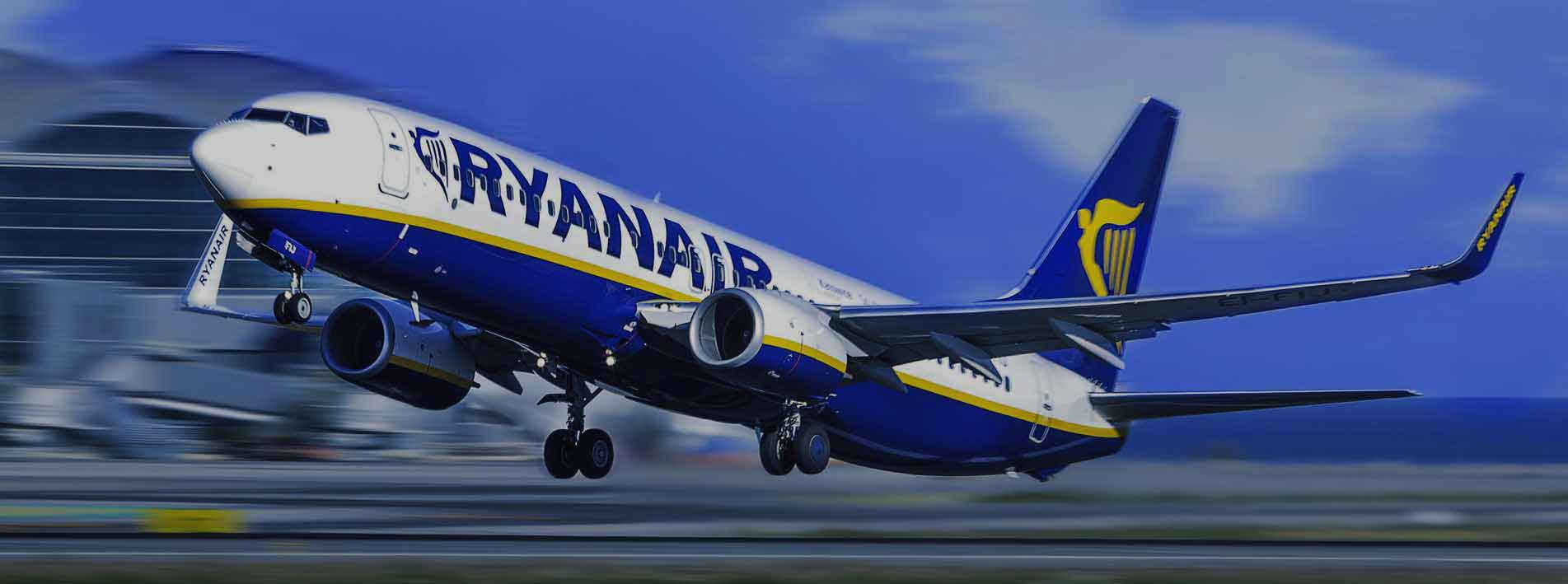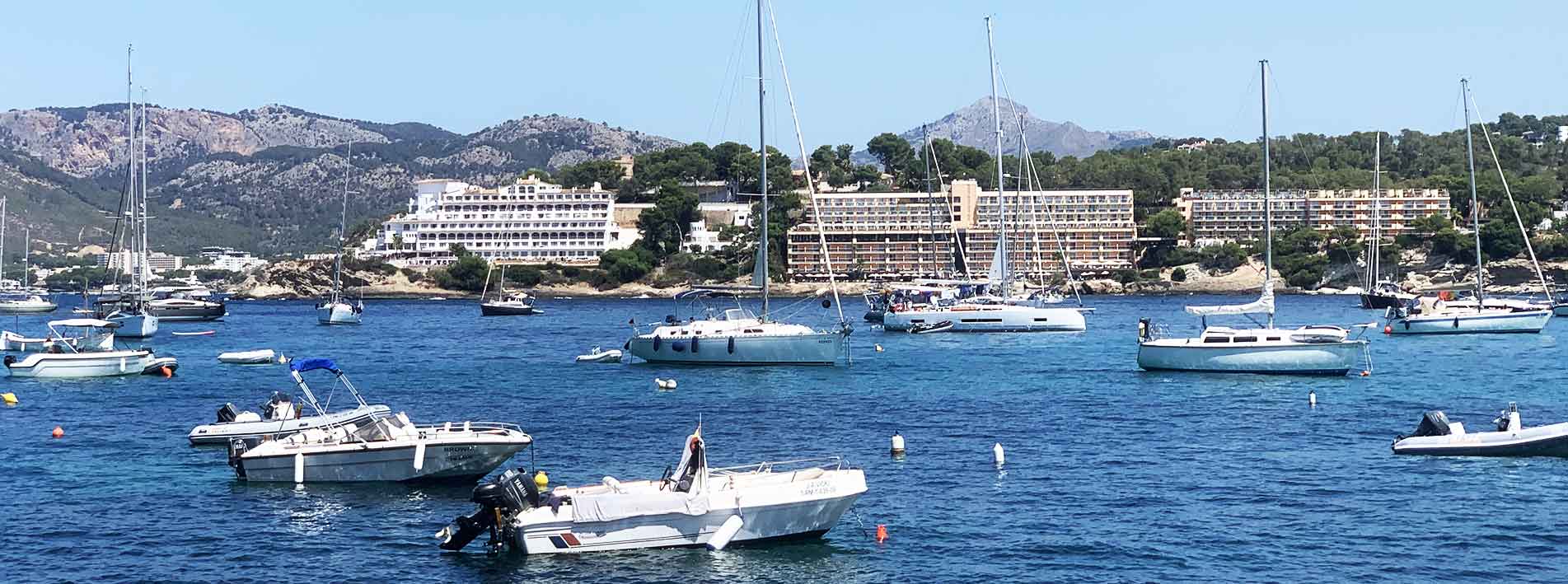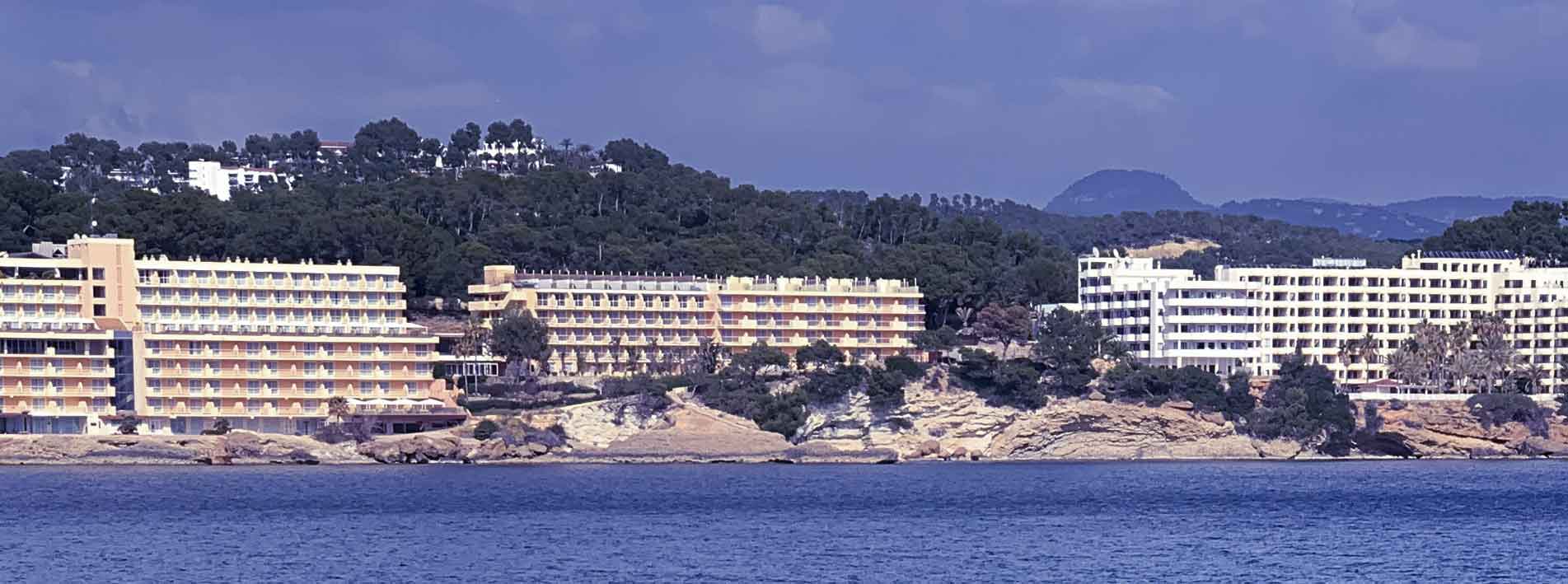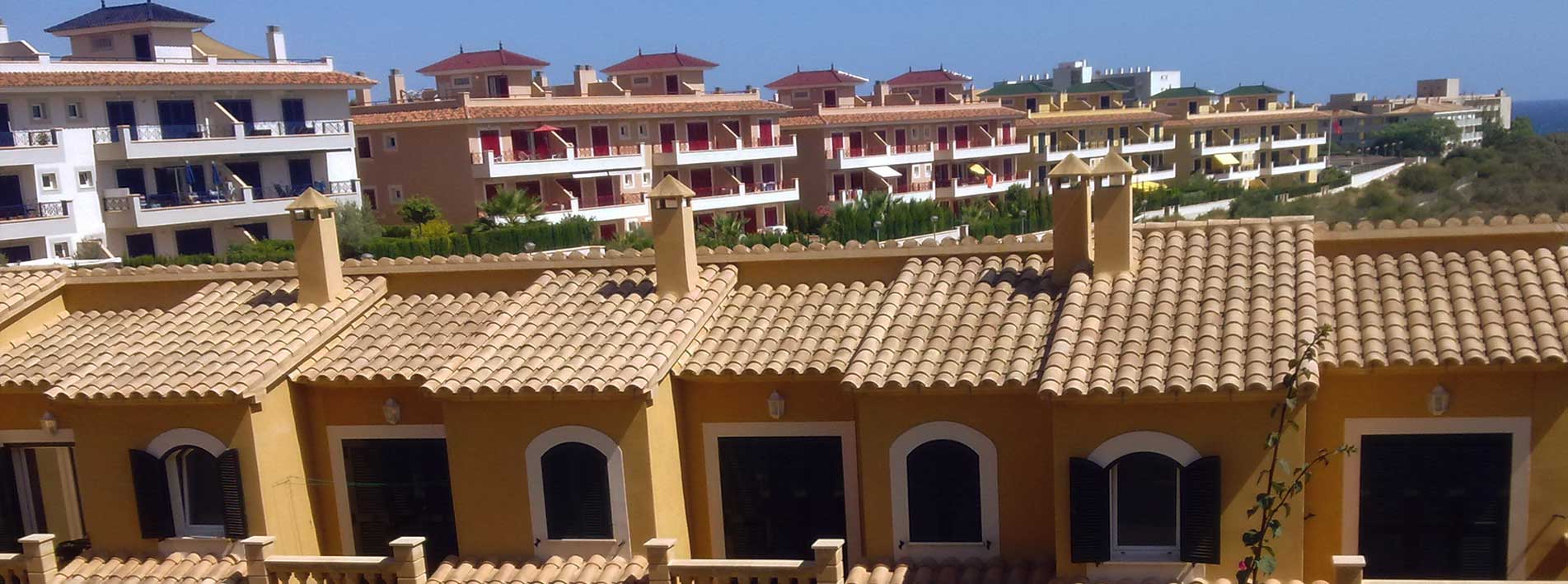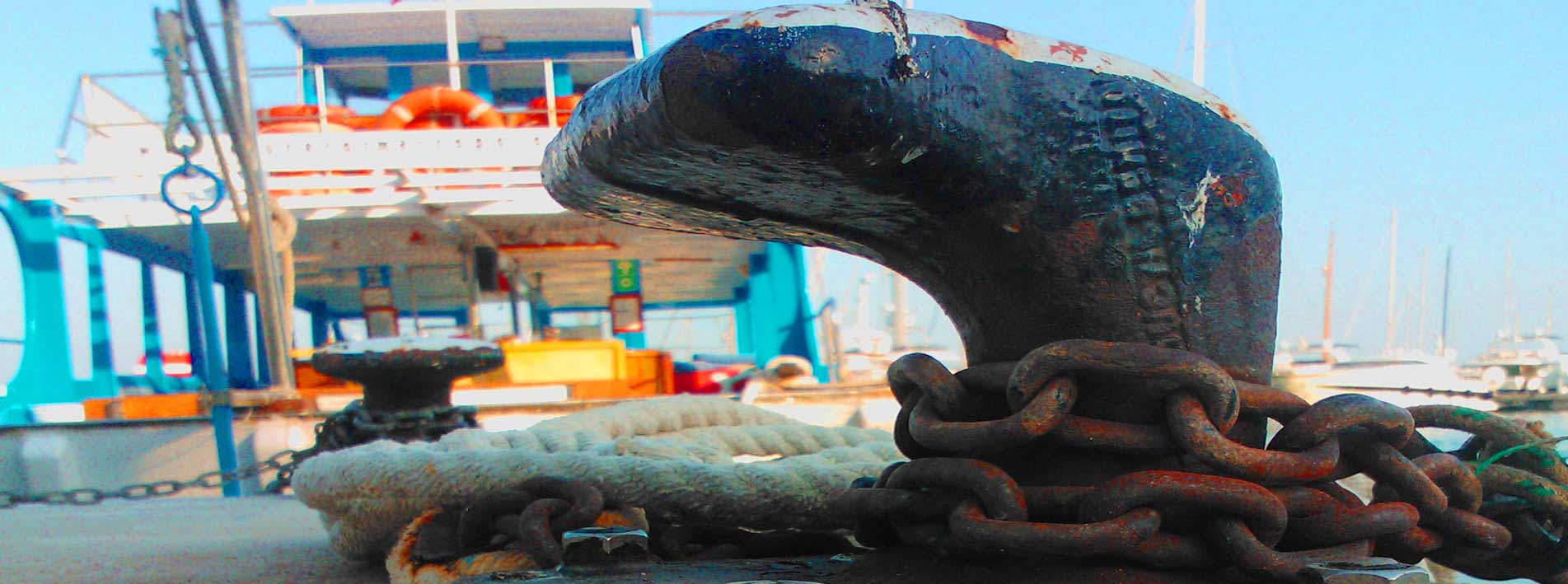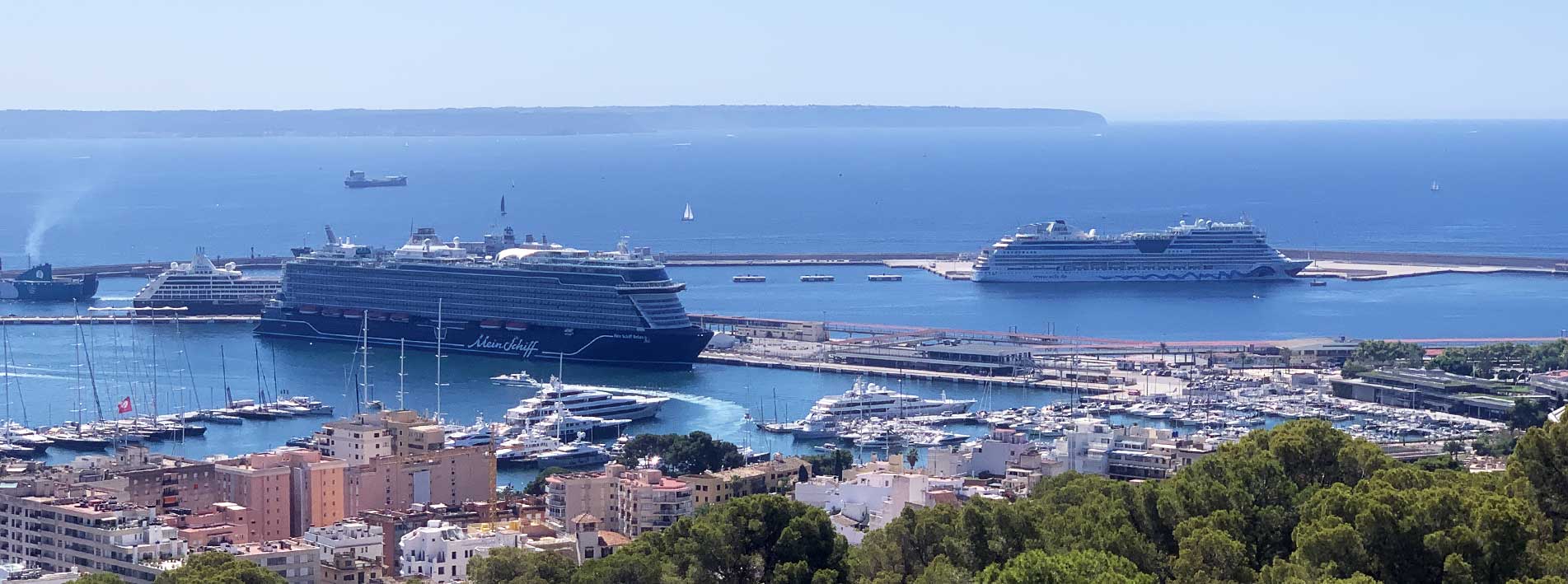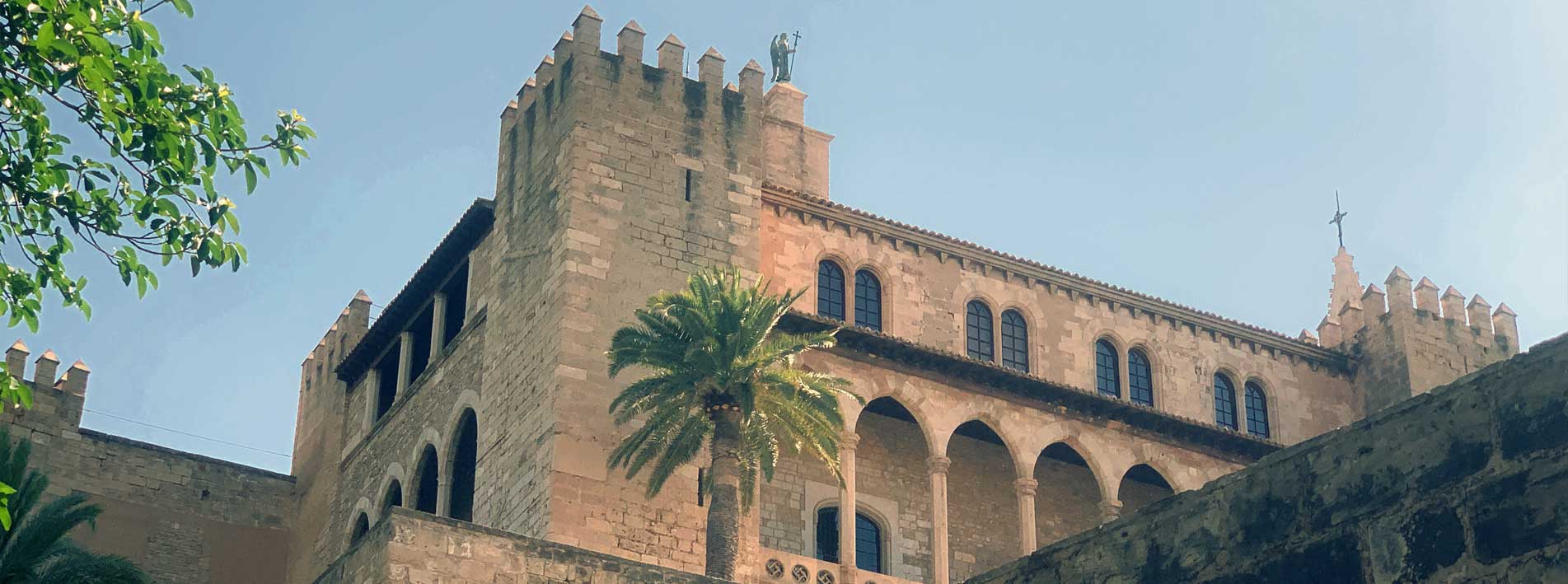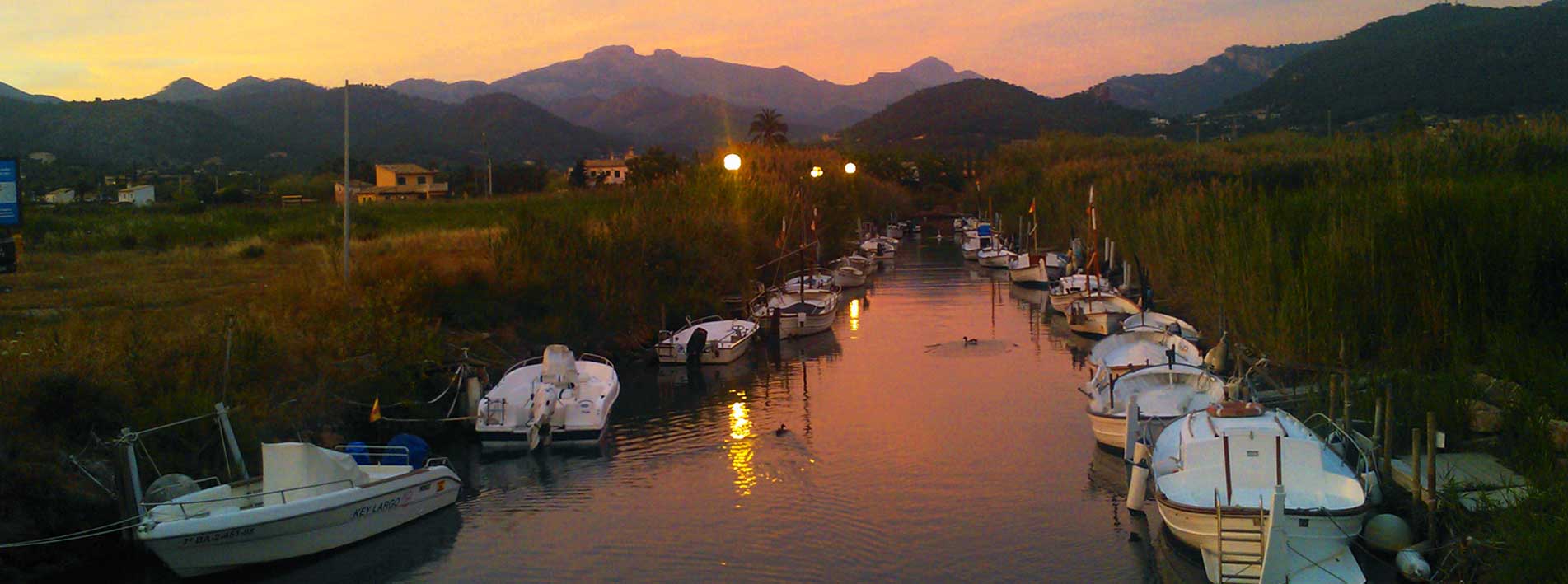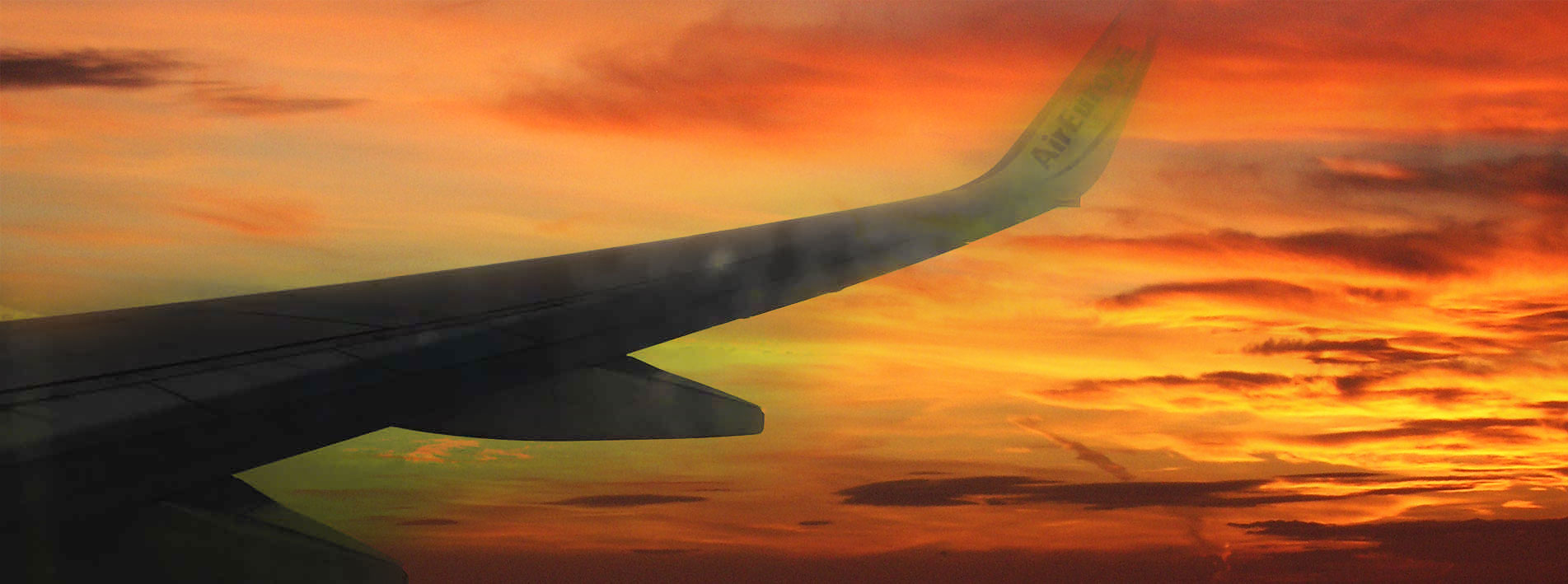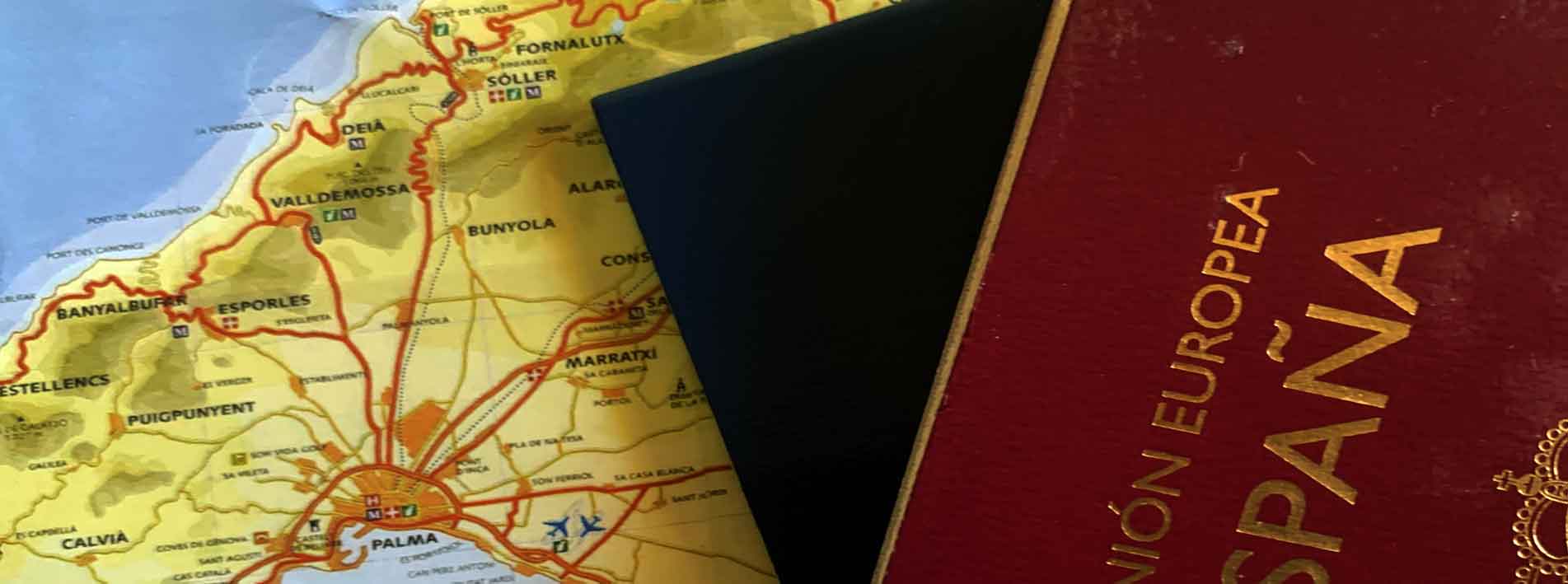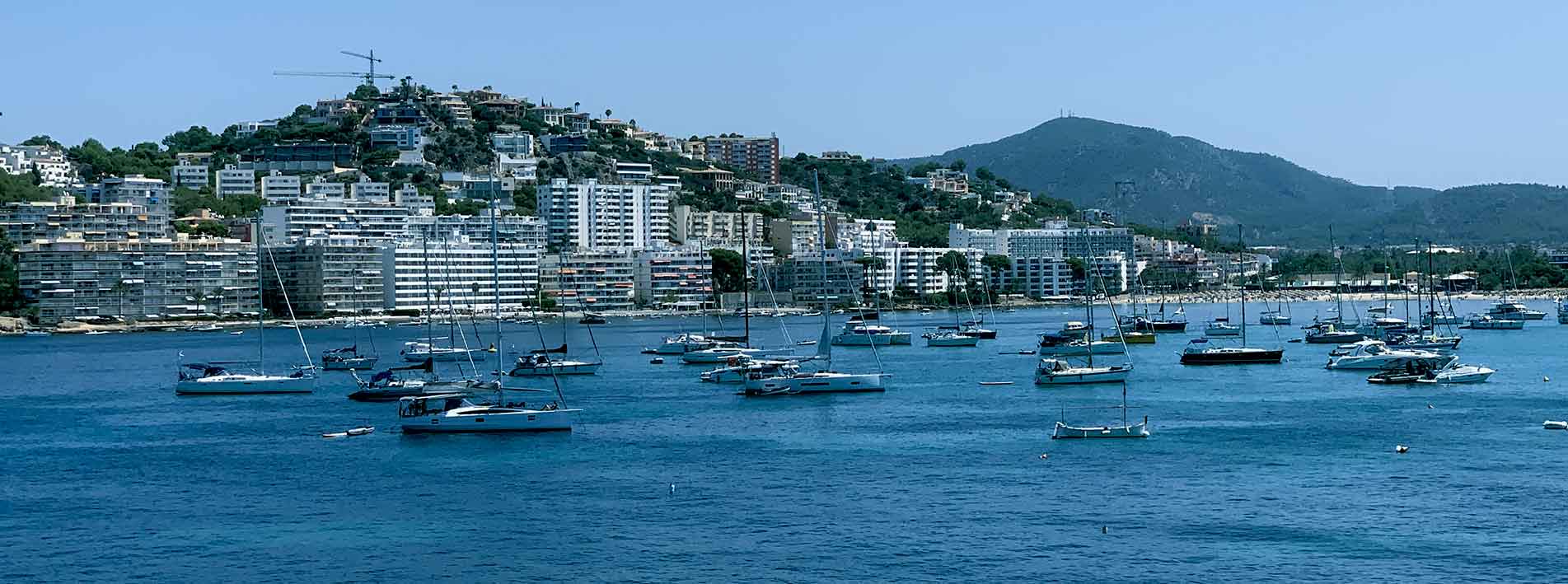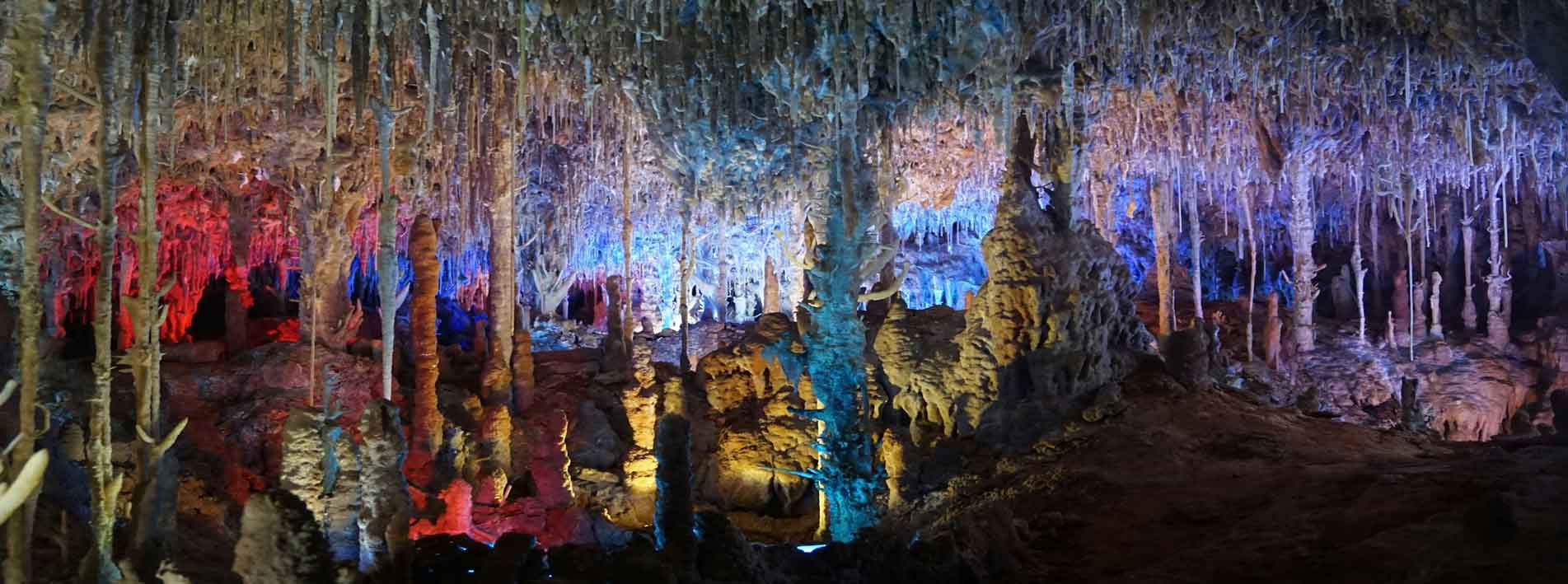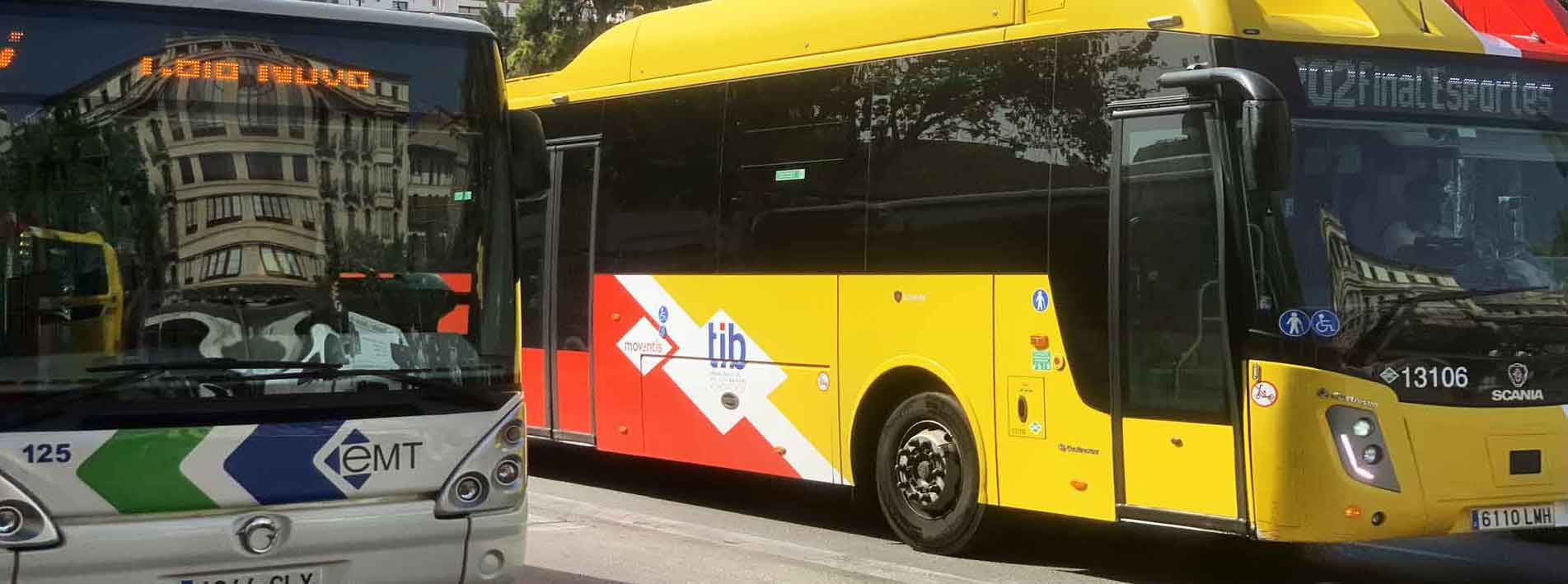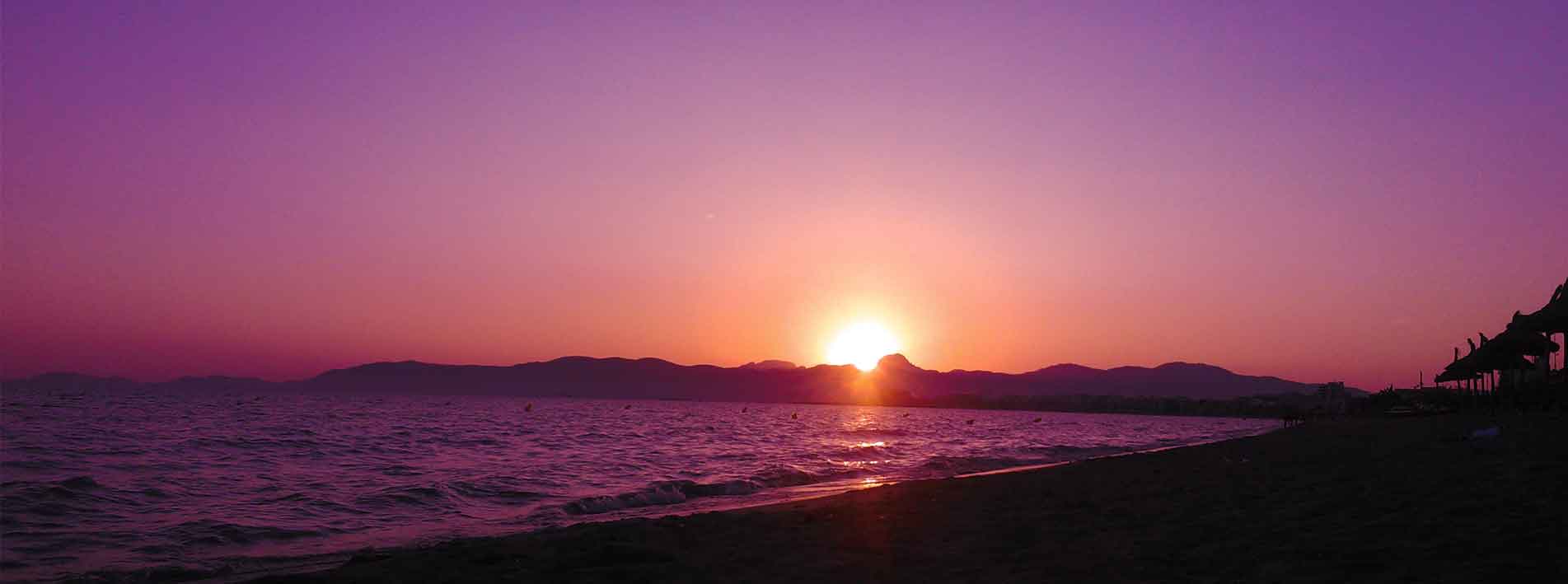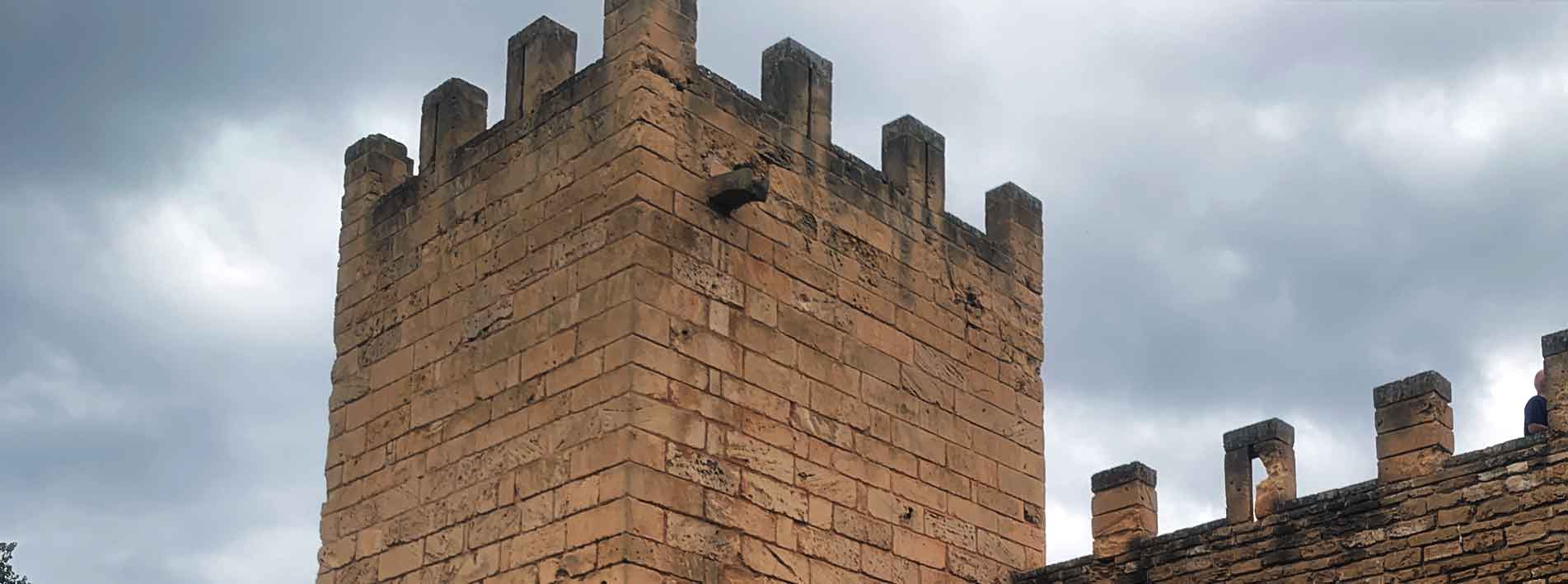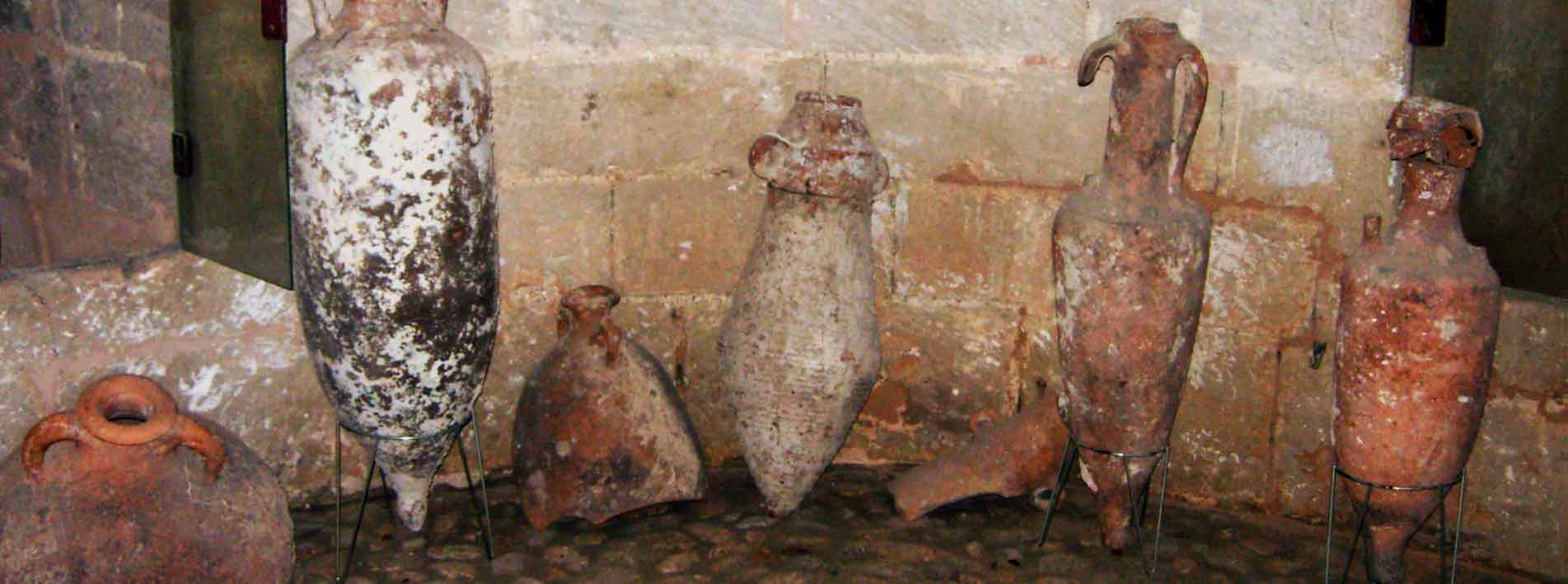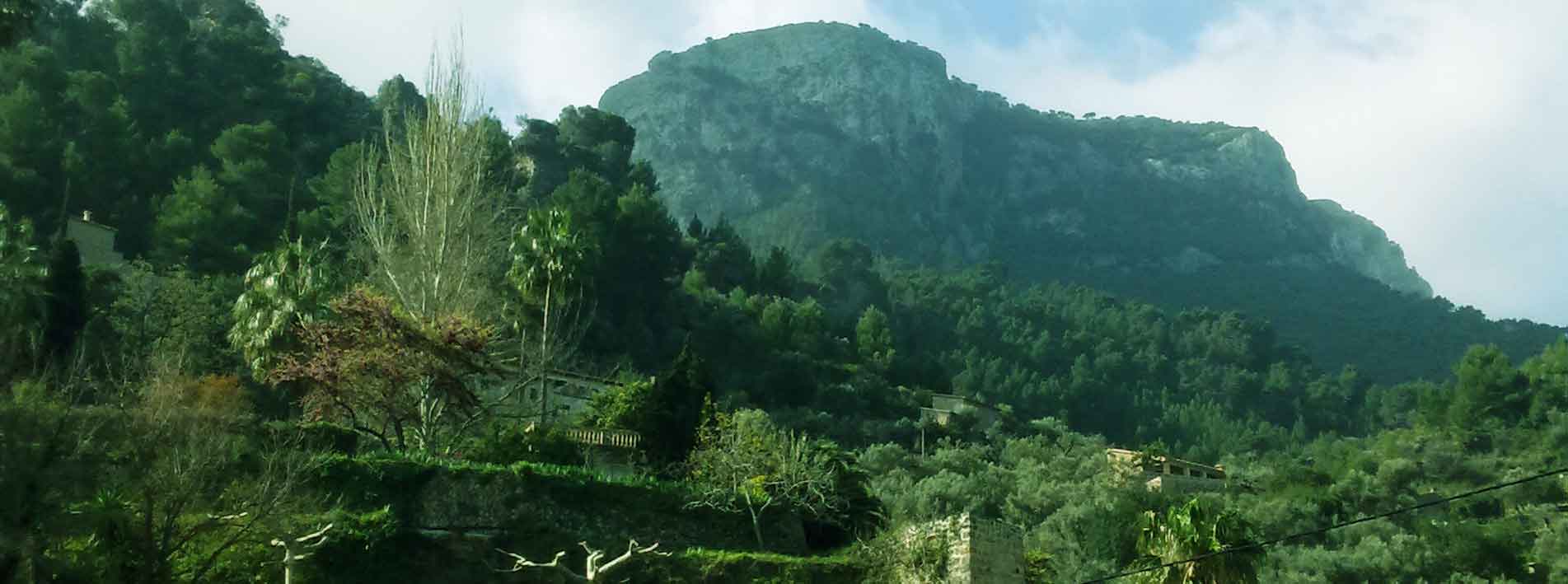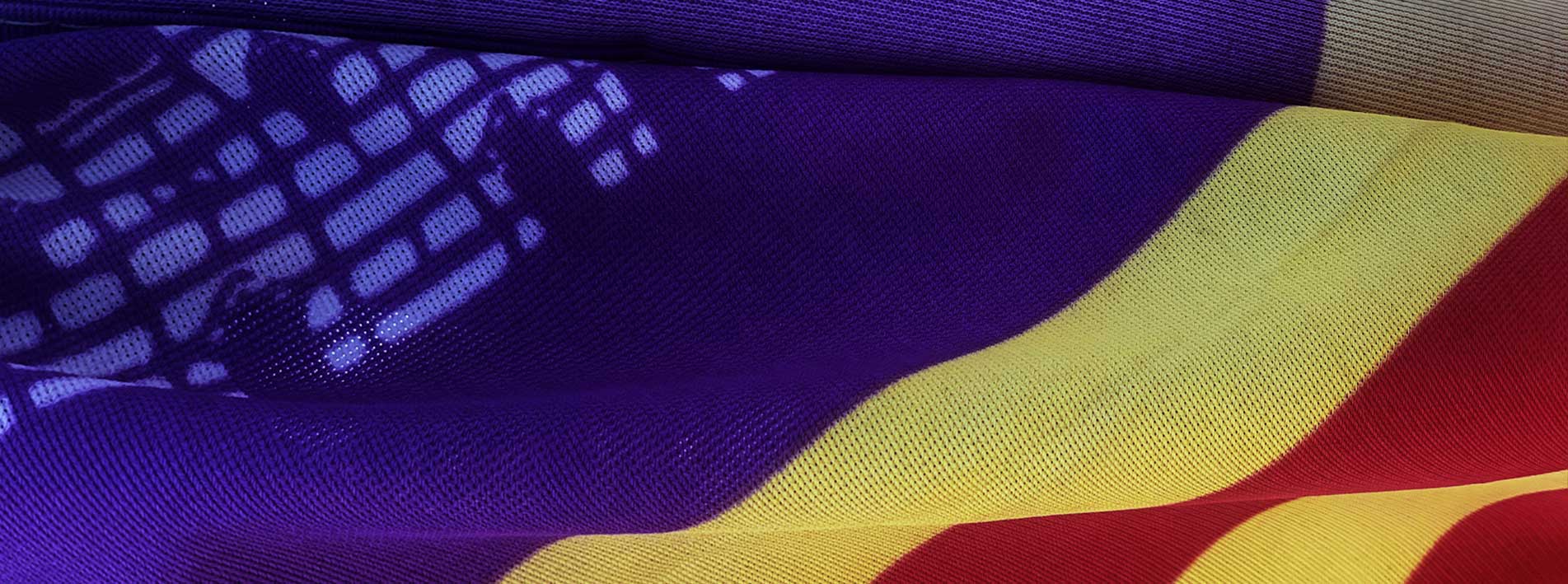North of Mallorca
The northern region of Mallorca is notable for the majesty of the Sierra de Tramuntana mountain range (a UNESCO World Heritage Site since 2011) and its splendid landscapes, which contrast with the extensive beaches and coves of golden rocks, sand, small pebbles, and turquoise waters. The north of Mallorca offers that unique Mallorcan charm that perfectly combines the green vegetation of the mountains with the blue of the coastline, which has a very well-developed infrastructure for tourism.
The north of Mallorca offers us that perfect combination of mountains and sea. In much of its geography, the cliffs slide down to the beautiful northern coasts in the form of steep cliffs. In the sea off the north coast of Mallorca, some little-known coves are hidden along its beautiful coastline, while in the mountains, some of Mallorca’s most attractive villages can be found.
The northern region of Mallorca is characterized by its extensive sandy beaches, which are a paradise, especially for families and lovers of the island’s history and cultural heritage, as well as for water sports enthusiasts.
The north coast of Mallorca
Beautiful bays, coves with warm crystal clear waters, and famous beaches characterize the north coast. A good way to explore the north coast of the island is along the promenade, which covers a large part of this area in its different villages and municipalities of Mallorca, offering beautiful landscapes and a splendid atmosphere wherever you go.
Some coastal areas or coastal towns that you should not miss in the north of Mallorca are: Cala Figuera, Cala Castel, Can Picafort, Cala San Vicens, and Formentor (Cap de Formentor).
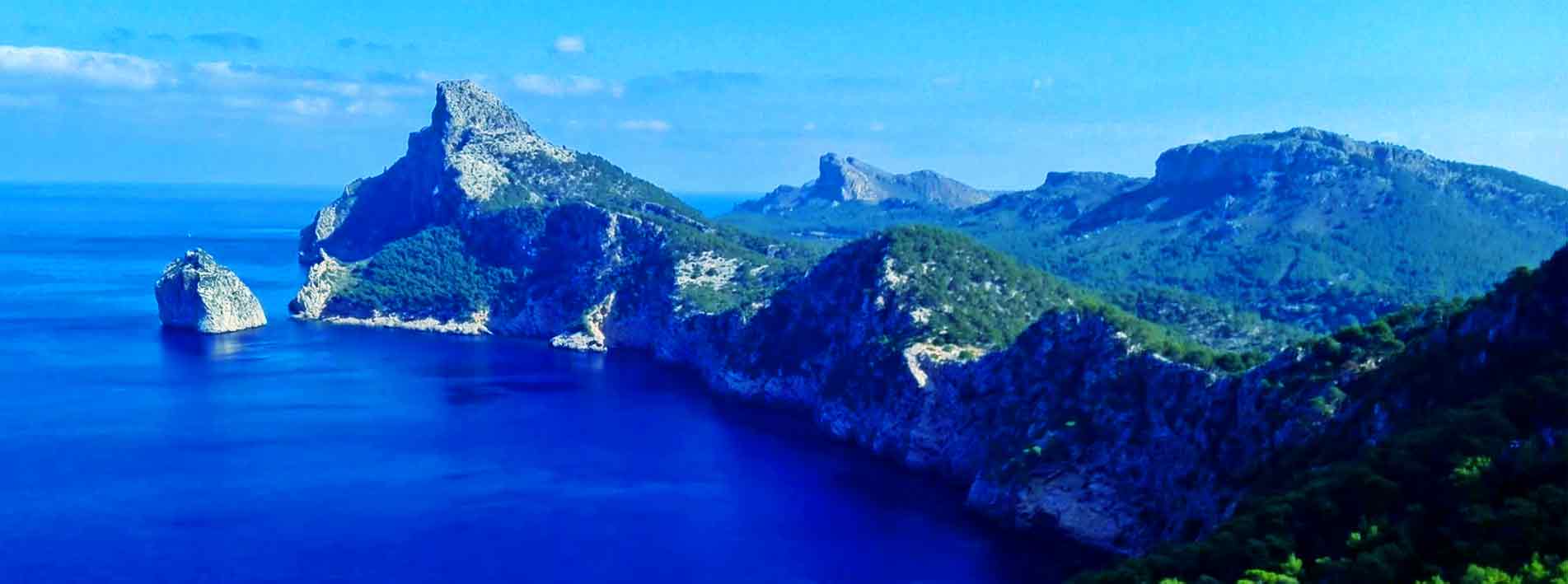 Beaches and coves in the north of Mallorca
Beaches and coves in the north of Mallorca
The beaches of northern Mallorca include the extensive Muro Beach, the emblematic beach of Can Picafort and the Alcúdia area, ideal for families due to its shallow waters and white sand, as well as the iconic Formentor beach. Also noteworthy are coves such as the four that make up Cala Sant Vicenç (Cala Barques, Cala Clara, Cala Carbó, and Cala Molins) with turquoise waters.
Other coves in the north of Mallorca are not always characterized by sand. Some of the most iconic coves in this area have rocky bottoms and pebbles on the shores. Some of the best-known coves in this area are:
Cala Murta is one of the most beautiful coves in northern Mallorca. It is a small rocky cove (with very little coarse sand) that is about 80 m long. Cala Murta can only be reached on foot or by bicycle. The route by car only goes as far as the starting point. However, on the way there, you can stop at the Es Colomer viewpoint, where you can enjoy beautiful views of the natural landscape provided by the mixture of mountains and sea that characterizes this area of the island of Mallorca.
Cala Castell is a beautiful cove with sand and smooth stones in the north of Mallorca. It is unique in that it is privately owned, so access requires prior authorization. In short, Cala Castell is a small Mallorcan paradise that surprises us with its crystal-clear waters. It is a cove.
Places of Interest and Monuments in Northern Mallorca
In northern Mallorca, there are many places of natural, historical, and cultural interest. In the towns that make up this areas or zone of Mallorca, you can visit numerous places and enjoy many leisure activities. Below, we will mention just a few of them.
 Albufera Natural Park (S’Albufera de Mallorca)
Albufera Natural Park (S’Albufera de Mallorca)
The Albufera or S’Albufera de Mallorca is the largest and most important wetland in the Balearic Islands. It covers an area of 2,036.23 hectares, mainly consisting of meadows and marshes. It is located within the municipalities of Muro and Sa Pobla. It was declared a Natural Park in 1988.
S’Albufera de Mallorca has ancient origins and has varied in size and characteristics according to changes in sea level, but the current wetland was formed less than 100,000 years ago.
S’Albufera (Mallorca´s Albufera) was an ancient lagoon separated from the sea by a string of dunes. Over many centuries, it has filled with sediment to become an extensive floodplain. The Albufera Natural Park in Mallorca protects almost 2,000 species of animals (mainly birds) and 65 hectares of marshes and dunes.
Archaeological site Roman city of Pollentia
Pollentia was a Roman city and is the most important archaeological site from the Roman period preserved in northern Mallorca. It is located in the municipality of Alcudia. The name Pollentia was inherited during the Islamic period from the nearby town of Pollensa. The Roman city of Pollentia was founded by the Roman consul and general Quintus Caecilius Metellus during the Roman conquest of the Balearic Islands between 123 and 121 BC. It was declared a Historic-Artistic Site in 1946.
Archaeological excavations carried out in the ruins of the Roman city of Pollentia have dated it to between 80 and 70 BC. Currently, a residential area known as La Portella, the Forum, and the Theater have been excavated. These archaeological finds are on display at the Monographic Museum of Pollentia.
The archaeological site of the ancient Roman city of Pollentia also includes an area of workshops and a 3rd-century wall, the Forum (the city’s civic center), as well as the remains of the Capitoline Temple, dedicated to Jupiter, Juno, and Minerva, two smaller temples, and an area of taverns that formed the commercial part of the forum. and the 1st-century theater, which still displays part of its cavea or seating area. Remains of a necropolis can also be seen in this archaeological complex.
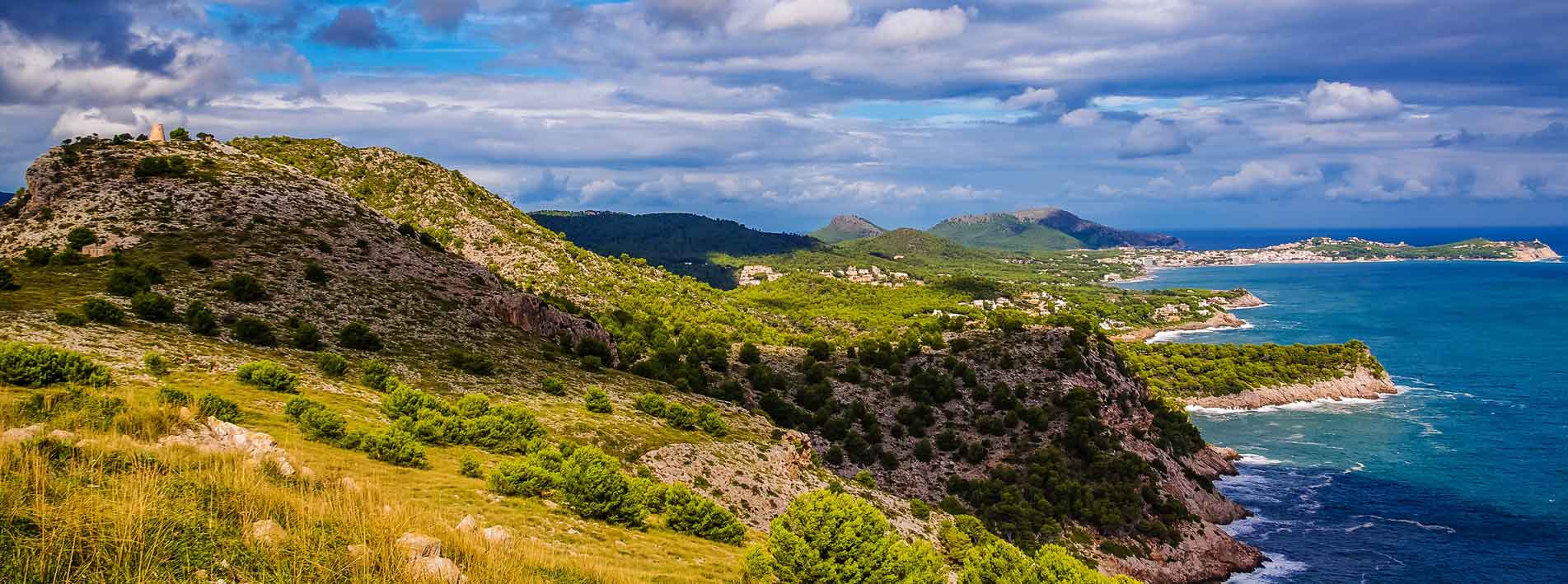 Porta del Moll
Porta del Moll
Among Mallorca’s most prominent military architecture are the medieval fortifications of Alcudia. The walled fortification of Alcudia was built specifically to protect the city from the constant pirate attacks that the island suffered at the time, but according to various historians, it was breached several times.
Construction of the Alcudia wall began at the end of the 13th century and was based on a design by King James II. It was a square wall built without the use of mortar. It reached a total length of 1.5 kilometers. Its average height is six meters, and it was secured with 26 towers. It had a moat, which is still largely preserved.
The city’s ring of fortifications underwent various modifications, but apart from a few remains, no traces of these transformations survive today. The city could be accessed through the beautiful gates in the wall. Of these gates, two have survived the passage of time: the Porta of Sant Sebastià to the west and the Porta del Moll (or de Xara) to the east.
Cap de Formentor
Cap de Formentor (Cape Formentor) is the northernmost point of the island of Mallorca. At some points along the steep cliff, the cliffs reach heights of 300 meters, and the views from the Formentor lighthouse or other points along the road make this area a paradise in the heart of Mallorca’s Finisterre.
Cape Formentor, or Cap de Formentor, is a privileged enclave far from the most touristy areas of Mallorca, shaped by the winds and waves eroding the rocks of the rugged Formentor coastline.
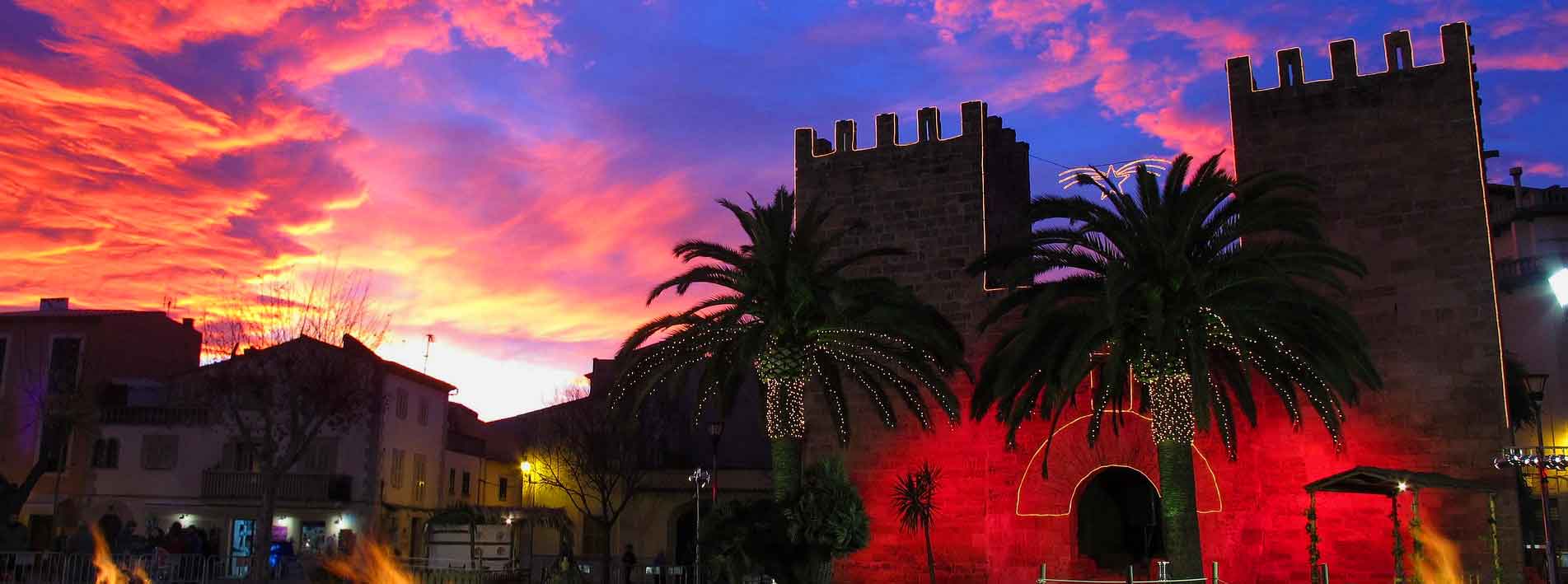 The Formentor Lighthouse
The Formentor Lighthouse
Overcoming all the obstacles posed by its remote location and difficult access at Cape Formentor, which made its construction difficult, the Formentor lighthouse (210 meters above sea level) was inaugurated in 1863. The Formentor Lighthouse is the pilgrimage point of Cap de Formentor, a 22-meter-high white tower accessed after about 20 kilometers of a winding road, which finally rewards us with splendid views of landscapes and cliffs.
The Formentor Lighthouse can only be accessed by this road. So, if you are not an experienced cyclist, you will need to rent a car in Mallorca or use public transport with efficient Mallorca’s bus system, line 334 of TIB (check details and timetables here)
Activities in the north of Mallorca:
In the north of Mallorca, you can enjoy the picturesque towns and villages that make up the area. You can stroll through its narrow streets and enjoy the Serra de Tramuntana mountains. You can head to the coast and discover idyllic coves such as Cala San Vicenç and Cala Bóquer, or visit places of cultural interest such as those we recommended earlier. And if all that weren’t enough, there’s more… much more:
Cycling in the north of Mallorca
In the north of Mallorca there are several very popular places for cycling. Due to the great views offered by the northern part of Mallorca and also because of the environment, many cyclists plan their routes in this area, which is very close to the Serra de Tramuntana mountains. This increases the possibilities of enjoying the whole geographical area of the island. Among these cycling routes, there are two that are usually very popular:
The Pollensa route: this starts in one of the most attractive localities in Mallorca, which has managed to maintain its Mediterranean appearance and spirit. On this cycling route, you can fully appreciate its port and beaches, with Cala de San Vicenç being one of the most outstanding. The organizers of the route assure us that it is not particularly difficult and can also be enjoyed by families with children.
The route to Cape Formentor: The organizers assure us that this is a more complex route. The goal is to reach the Formentor lighthouse (the northernmost point of Mallorca), located on cliffs that reach 300 meters above sea level. From this point, you can enjoy an excellent panoramic view of the entire island. Along the way, you will encounter a wide variety of impressive flora and fauna.
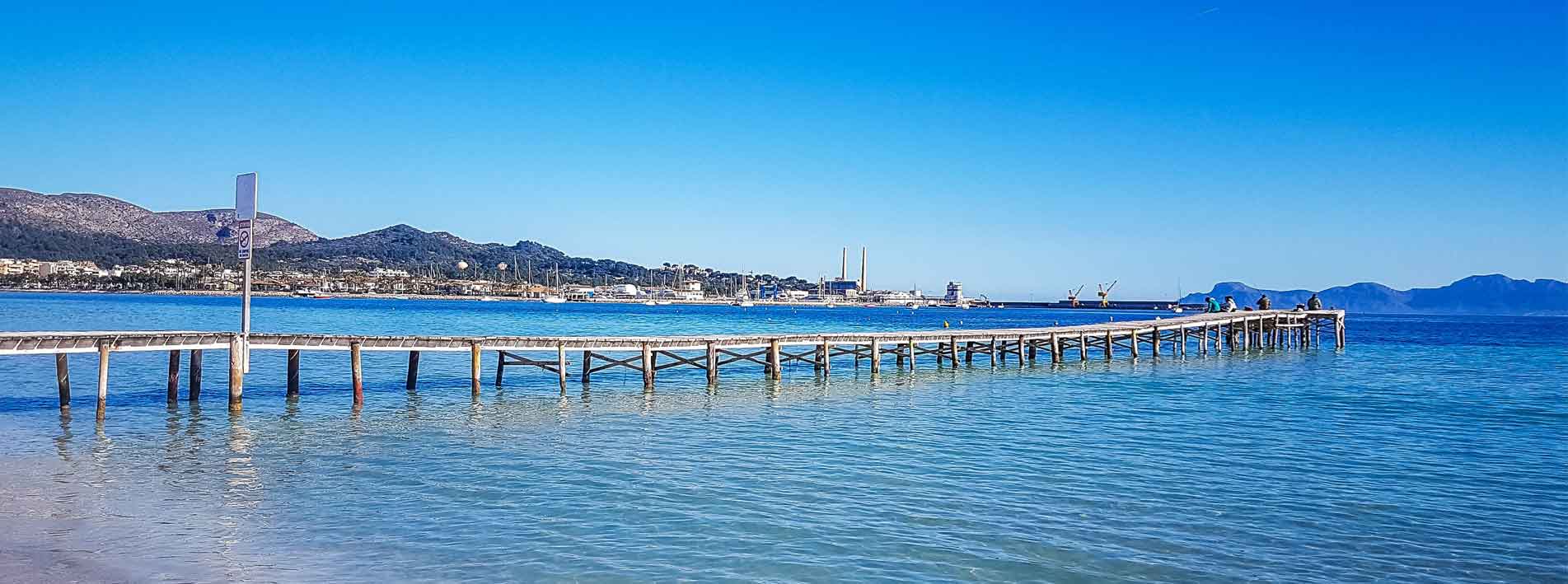 Hiking in northern Mallorca
Hiking in northern Mallorca
The northern region of Mallorca offers breathtaking landscapes, lush pine forests, and rugged cliffs, making it a paradise for hiking enthusiasts. Enjoying the views, discovering hidden caves, and breathing in the fresh mountain air are guaranteed on any hiking trail in northern Mallorca. Below, we will discuss a couple of hiking trails in northern Mallorca that promise adventure and unforgettable experiences.
The Cala Murta route is a short and easy hiking trail on the Formentor peninsula that takes you through a green pine forest to a picturesque pebble cove that looks like a small private oasis. During the walk through the forest, you can spot native birds and vegetation. It is a fun experience for both adults and children. Once you arrive at Cala Murta, you can dive into the calm, clear waters of this secluded cove. In the Sierra de Tramuntana section, you can also enjoy breathtaking panoramic views of the high cliffs and crags surrounding Pollença Bay. This hiking trail to Cala Murta in northern Mallorca is ideal for families and explorers seeking peace and relaxation in Mallorca, away from the hustle and bustle of tourism.
Another hiking route in the north of Mallorca is undoubtedly the ascent of Puig de María, an iconic peak overlooking the town of Pollença. This is a moderately difficult hike that starts at the base of the mountain, where you will find the marked trail that winds its way up. Your efforts will be rewarded once you reach the summit, with spectacular views of the medieval town, port, and bay of Pollença. At the top, you can also take some time to visit the historic monastery and chapel located on the mountain.
Sa Cova Tancada is another impressive hiking route in the north of Mallorca. If you are an experienced hiker looking for an exciting coastal adventure, this challenging hike is just what you need. Embark on a journey through the diverse landscapes of Alcúdia and discover the hidden gem of Sa Cova Tancada. Hidden in the rugged cliffs of the island’s north coast, you will find this cave. It is an interesting and unique experience because you climb up only to descend into the hidden cave full of winding passages.
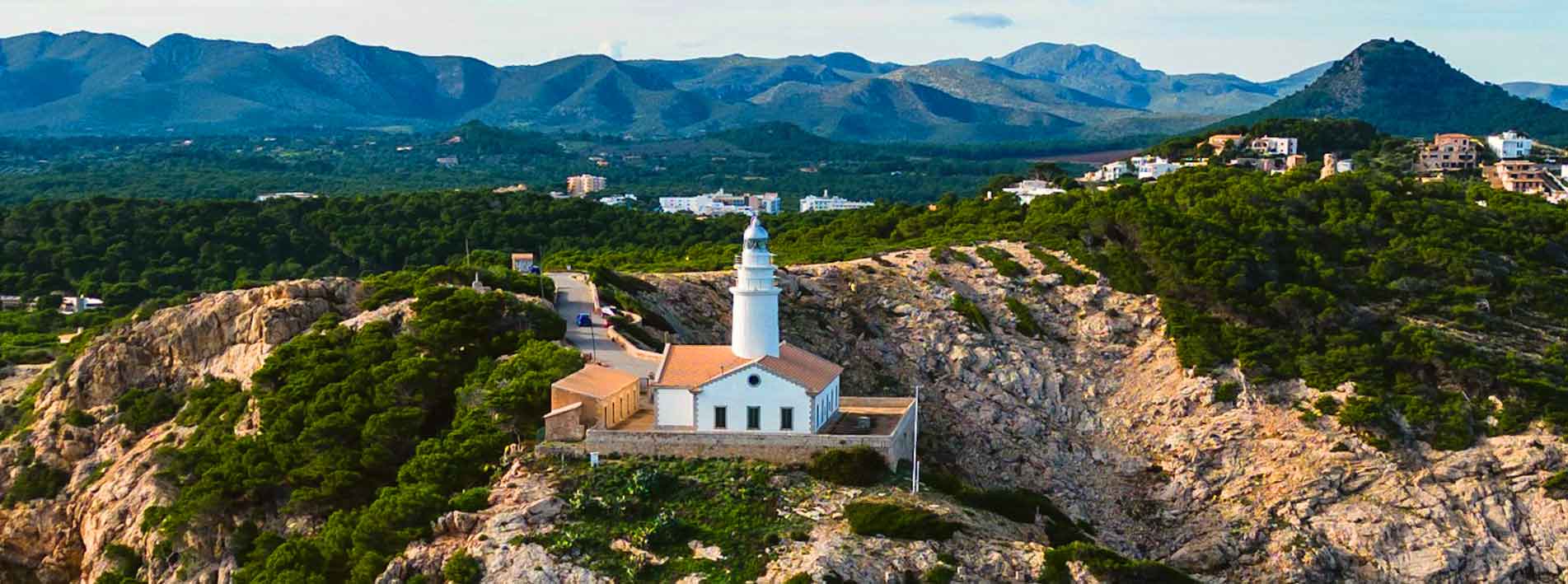 Other Excursions in Northern Mallorca
Other Excursions in Northern Mallorca
In northern Mallorca, there are many activities to enjoy, whether sporting, family-oriented, or purely leisure-based. The climate and natural surroundings, with their excellent views, offer a wonderful setting for outdoor activities that can be enjoyed all year round, both in the mountains and on the coast. There is a wide variety of excursions, tours, and different routes on offer in these regions of Mallorca. These include boat or catamaran trips along the coast, deep-sea fishing trips, dolphin watching, horse riding excursions, visits to viewpoints and protected natural areas, among many others.
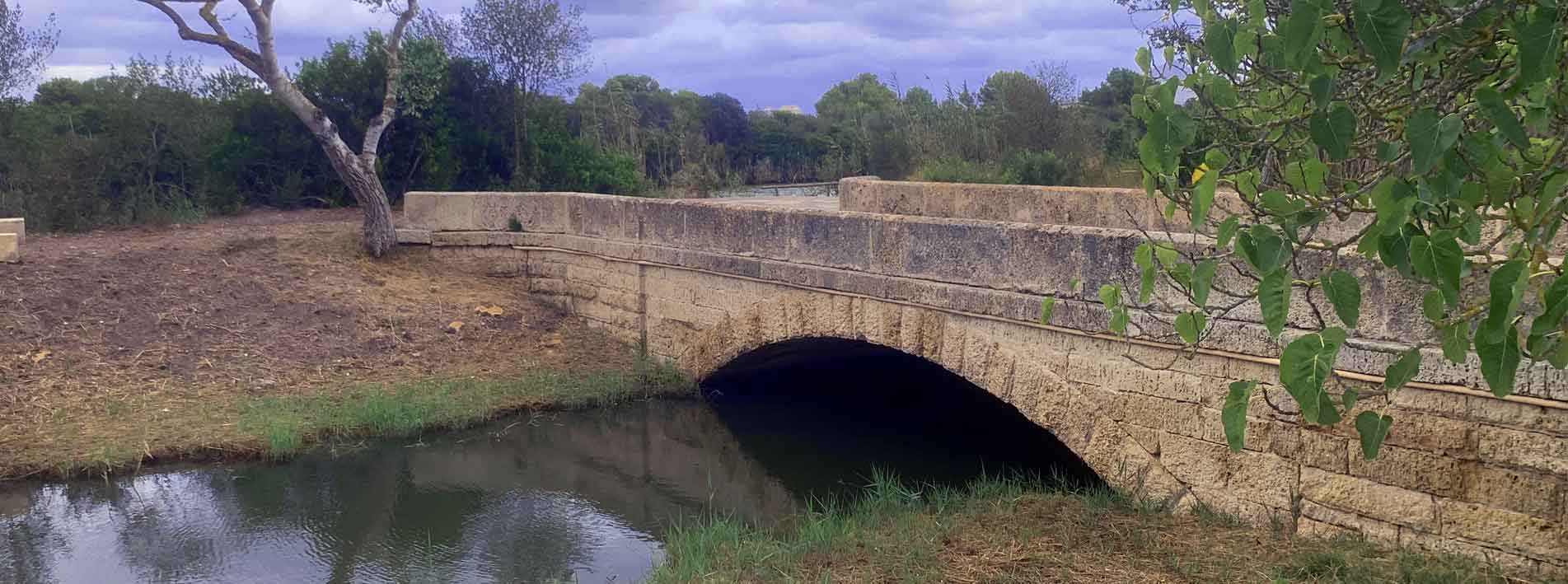 Places of interest in the north of Mallorca
Places of interest in the north of Mallorca
In the north of Mallorca, the Cap de Formentor, the Albufera Natural Park, the medieval walls and the Roman settlement of Alcúdia are particularly noteworthy. Also popular are coastal towns such as Can Picafort and Puerto de Pollensa, beaches such as Playa de Muro and the coves of the Serra de Tramuntana, as well as several charming villages such as Pollença.
This area is characterized by its privileged nature and dreamlike landscapes. Cap de Formentor is the northernmost point of the island and offers breathtaking views of Alcudia Bay from its iconic lighthouse. The Albufera Natural Park is the largest wetland in the Balearic Islands and a sanctuary for birds, ideal for birdwatchers and nature lovers.
Accommodation in the northwest of Mallorca
In the north of Mallorca, the hotel industry is concentrated in destinations such as Alcudia, Pollença, and Can Picafort, which offer well-equipped hotels of all categories and tourist apartments, ideal for families and nature lovers. For a more rural or peaceful experience, vacation homes and agrotourism accommodations can be found in smaller villages such as Son Serra de Marina. The area has extensive beaches and is well connected. Although it is not a destination that stands out for its exuberant and wild nightlife, as in the south of the island, the region offers a wide range of nightlife options that are, in any case, sufficient.
The northern part of Mallorca is brimming with culture and history. Some of the most enigmatic cities of Mallorca are concentrated in this area. Alcúdia is a prime example of this. Its old town is surrounded by medieval walls and features Roman ruins, creating a unique historical atmosphere. Pollensa is famous for its 365-step Calvary Staircase and Roman bridge, as well as its weekly market. Port de Pollensa is a marina with a lively promenade, cafes, and restaurants. Can Picafort is a popular tourist resort located in the bay of Alcudia, ideal for family tourism.
And that’s it for this brief guide to north of Mallorca. We hope it helps.
By the way: Are you coming to Mallorca on a tourist trip? If you find it helpful, you can also check out our travel guide to Mallorca and more tourist information about the island

